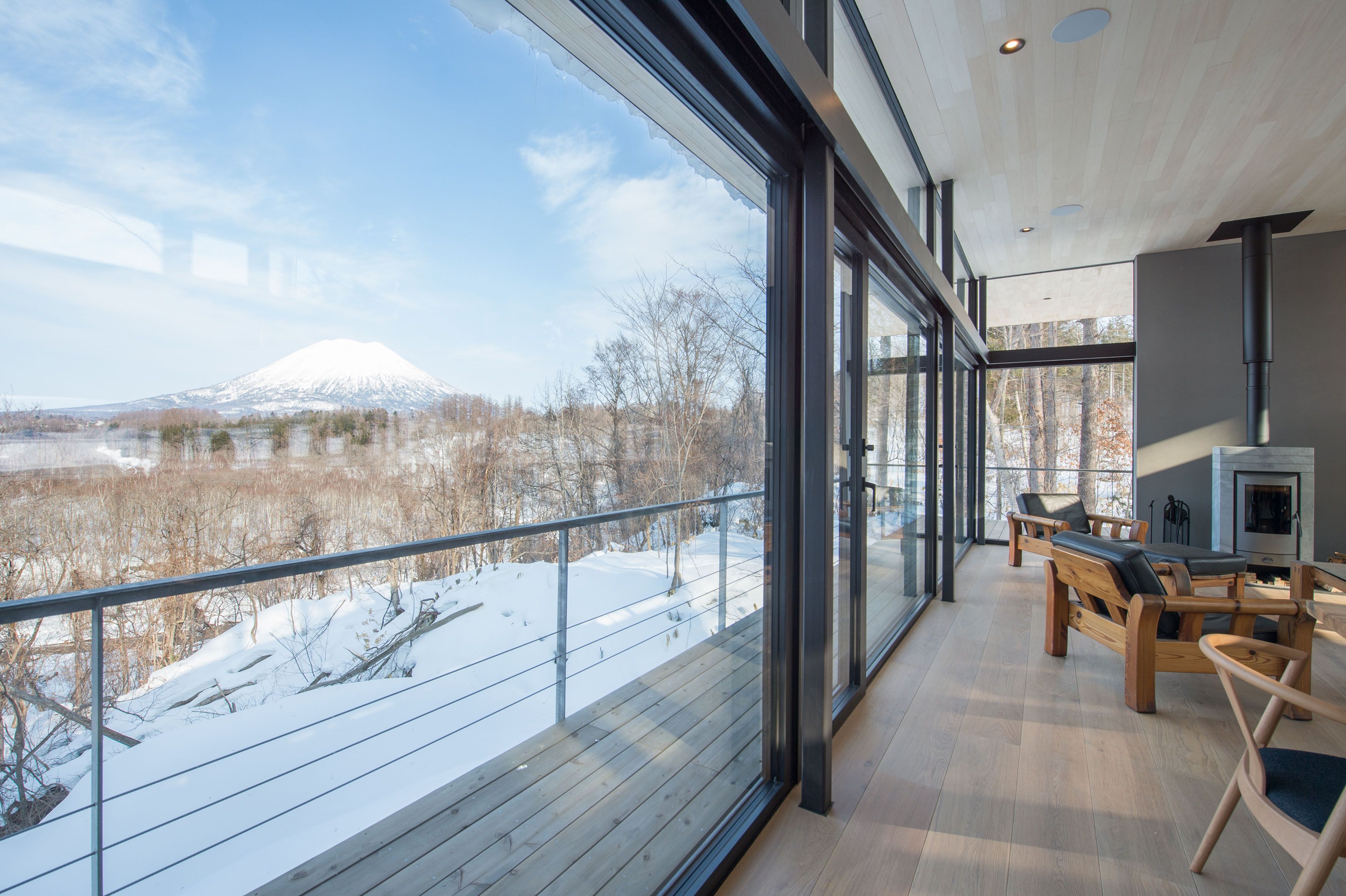
Hiyoku by DAIDA DESIGN STUDIO
In this interview, we asked Tsukasa Daida, of DAIDA DESIGN STUDIO, about Hiyoku, their 2018 Architectural Design / Residential Architecture winning project.
Tsukasa Daida was born in 1971 in Kanagawa, Japan and graduated from the Department of Architecture at Meiji University in 1993. From 1993-2007 he worked for Ishimoto Architectural & Engineering Firm, Inc. In 2007 he established DAIDA DESIGN STUDIO.

Nestled in the forest, the site for Hiyoku is located 2km west of Niseko town area. You can see Shiribetsu River below, with Annupuri Ski Resort and Mt. Yotei in distance. The owner hoped to incorporate the landscape into the residence and to have a modern design that made use of the texture of wood, steel, concrete and other materials. The layout of the building was elongated in order to capture the landscape of the Shiribetsu River and Mt. Yotei to the east. The eastern opening is an expansive 3.2m in height which perfectly captures the majestic view.
The building stands amongst the beautiful scenery of Hokkaido. Here, you can enjoy the four distinct seasons, from pure white in winter, light green in spring and summer, and yellow in the fall. The project goal was to take in the views and the sense of ever-changing nature into the building. We introduced the steel structure to maximize the openings. We looked for the right span for the openings while minimizing the steel depth. The material pallet was kept natural and simple with wood, stone and steel. Heat conduction is always a major concern in this cold climate; we used wood, which has low heat transferring factor, to wrap the critical heat bridging section, in addition to the insulation materials. The detail design was developed with this in mind.

The biggest challenge was to achieve the weightlessness of the structure and the large clear openings to maximize the views. Located within one of the extreme snow zones in Japan, the massive snow loads and the protection against heat conduction required exceptionally thoughtful detailing.
I believe the most outstanding and innovative part of this project is the large windows that take in the beautiful scenery and the structural system that supports it. Given the tight budget, the clients, project managers, designers and construction workers together gave wisdom and created beautiful architecture. This was a strong team effort and that’s what I am proud of the most.

From childhood, I loved drawing and crafting. I was interested in the design of cars and trains when I was in school, but I was intrigued by architectural design because it deeply relates to the specific location and context. There is no right or wrong — it’s all about how you interpret and express it. Before establishing my own practice, I was working at an office where projects were carried out with various architects as a team, I received many influences from them and this was a powerful lesson.
If I could own any building in the world, it would be the Yoyogi National Stadium. This building was built in 1964 for the Tokyo Olympics and designed by Kenzo Tange, one of the most influential architects in Japan. It is a great example of how all elements are put together as one built form, between the architectural design, structures, facilities and the energy of activities held within. I think it achieved the best sense of balance.

I think the recent development in materials and products provides us with a new design vocabulary. Some of the innovative products give us different approaches to design challenges. Introduction of BIM technology enables us to communicate with clients and constructors at job sites with speed and accuracy.
I think it is important to recognize that we always share the earth with others. Architecture can contribute to both society and the world by giving consideration to the Earth’s environment in every little step of the design process.
It is such an honor that my work is recognized by the world class award. Thank you very much. I hope this brings more opportunities to work with people from all around the world, and hope more young and talented architects in Japan go out and get connected to the world.
Many thanks to Tsukaso Daida for sharing with us his thoughts on the inspiring Hiyoku and the challenges of designing and building in an extreme snow zone.
